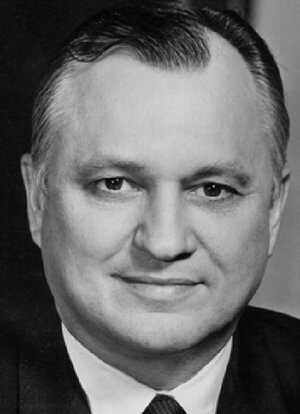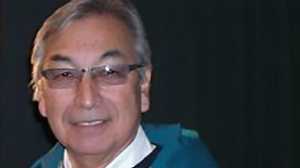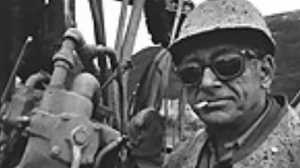Governor Walter J. Hickel and the Hickel Highway
"On May 2, 1967, a DC-3 with half dozen of us on board flew through the mountains of the Brooks Range directly over Anaktuvuk Pass. As I looked over the long gradual ramp of the North Slope, where the continental divide slowly merges with the Artic Ocean, a vision hit me, or call it intuition. I saw an ocean of oil. 'There's 40 billion barrels of oil down there,' I said." Walter J. Hickel, governor of Alaska, 1966 to 1969

Opening Up the Arctic
In 1966 Walter J. Hickel, a millionaire real estate developer and entrepreneur, ran for governor of Alaska on the Republican ticket. Much to everyone's surprise, he won by a narrow margin of 80 votes. It was the first time Hickel had ever run for a political office. In his inaugural speech, he made it clear that one of his major priorities was to open the Arctic. It would, he explained, help Alaska catch up economically with the rest of the country. Shortly after he was sworn in, the new state executive approved the sale of oil leases on 37,000 acres of the North Slope, a decision that had been postponed by the previous governor because of protests from Alaska Natives. So began the process that paved the way for the oil industry — literally.
A Road to Prudhoe Bay
Walter Hickel: "I drove [the tractor] the first six or seven miles myself. I got off and I told Jim, I said, don't you shut this thing off until you get to Prudhoe Bay."
In November 1968, under Hickel's orders, the state department of transportation began blazing a 400-mile winter road from Livengood, 60 miles north of Fairbanks, up to Prudhoe Bay. Work had to be halted in December because temperatures dropped to minus 63 degrees Fahrenheit. In mid-January 1969, the temperatures rose to a balmy minus 50 degrees and work resumed. By the time the road was complete in mid-March, Governor Hickel had left Alaska for Washington, D.C., to head the Department of the Interior under President Richard Nixon. His successor, Governor Keith H. Miller, christened the road the "Walter J. Hickel Highway."
Destroying Permafrost
While Hickel's career seemed to be taking off, his highway didn't fare so well. Alaska's department of highways had not learned lessons from past projects. To build the winter road, the engineers should have chosen a technique to protect the delicate permafrost that lays below the tundra. Army engineers had learned how to build Alaskan roads during World War II with the construction of the Alaska Highway. The road needed to be constructed of a layer of gravel with compacted snow on top. This raised bed would be sprayed with water to give it an icy surface. This would prevent exposing the permafrost. Instead, bulldozers scraped away the protective mat of vegetation and snow. By the time spring came, the permafrost was exposed to thawing and the road became a huge, muddy ditch. It was abandoned just one month after being built, leaving a huge scar on the landscape. Seen by environmentalists as an ecological disaster, the road was a catalyst for them to take action. The road also proved an economic failure -- in the single month of its operation, the cost of transporting freight on the Hickel Highway was no cheaper than flying it there.
Forced to Resign
Meanwhile, Hickel's political career also took a turn for the worse -- after serving as secretary of the interior for just one year, he was forced to resign his post for being critical of Nixon's Vietnam War policy. After the shooting of college students at Kent State University, Hickel had urged Nixon to be more respectful of young people's views on the war.






